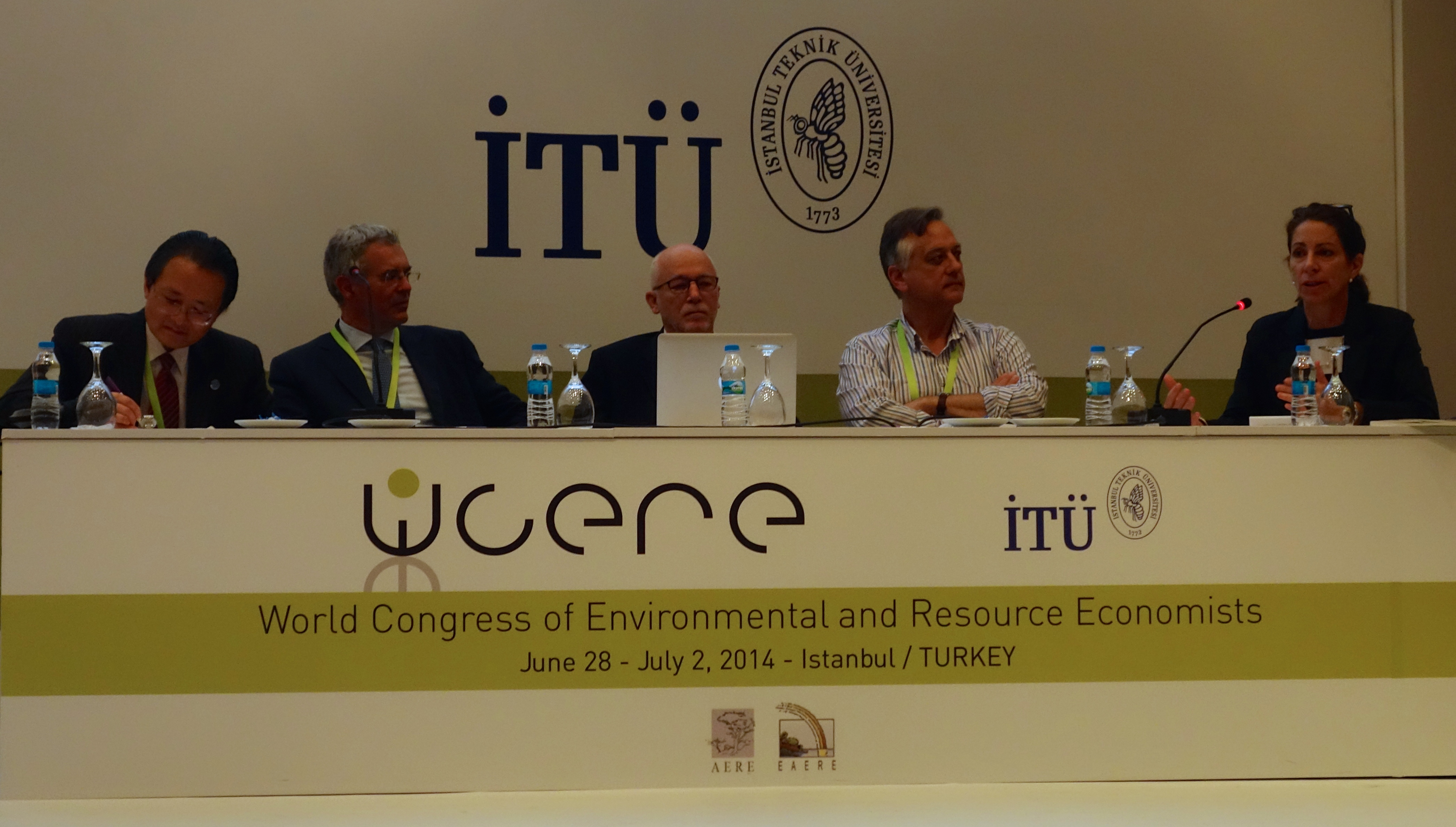How policymakers measure green growth has important implications for how we monitor the interactions between economic growth, social development and environmental sustainability. At the same time, indicators play a valuable role in helping communicate the importance of green growth and incentivizing action. With these issues in mind, the GGKP recently hosted a policy session on the topic of "Moving Beyond GDP - Measuring Inclusive Green Growth" as part of the Fifth World Congress of Environmental and Resource Economists (WCERE).
The session brought together policy and academic communities to debate the opportunities and implications of new measurements of economic growth, which capture more than GDP. The session was chaired by Marianne Fay, Chief Economist of the Climate Change Group at the World Bank and involved an in-depth discussion between Edward Barbier (University of Wyoming), Carlo Carraro (University of Venice), Geoffrey Heal (Columbia Business School), and Sheng Fulai (UNEP).
One map, many pathways
The session started with a broad open question to panelists on how we can better integrate our measurement of economic, environmental and social issues. It was argued that a single measure for green growth necessitates subjectivity when it comes to evaluating economic performance vis-à-vis the social choices or value judgments we make. Even if all the conceptual issues were to be worked out, we would still face the practical challenge of actually measuring the performance of our multidimensional environmental system. A dashboard of measurements could be seen as a more practical solution, but even then, important gaps still exist where no good measures (e.g. biodiversity loss).
Differences in national circumstances and priorities also pose important challenges in measuring the transition to a green economy. Likening the transition to a map, even with the same start point (brown economy) and end point (green economy), countries will take various pathways and use different vehicles to get there. Differences in structural contexts will make some indicators more relevant and more important than others. Green growth in one country might favor the development of green sectors, while in another country it may favor the greening of brown sectors or questions of equality.
Indicators as a tool to better communicate
A number of interesting points were raised regarding the importance of indicators in helping effectively communicate green growth. Numbers not only help us measure, but they also help communicate the challenges we face and the successes we’ve had. Recent emphasis has been placed on the opportunities associated with the transition to a green economy (e.g. green sectors). These opportunities have been particularly helpful in capturing the interest of policy makers. However, even with a compelling concept like green jobs, the inability to measure and communicate it effectively can ultimately dampen political motivation.
Improving our ability to communicate green growth concepts to policy makers and the public is critical, but there is also a need to improve the way we teach these concepts to economists. Not only do environmental and social issues need to be integrated into basic economic curriculums, macroeconomic courses need to teach that natural capital is a key input into the production process.
Building links between efforts
Ultimately, green growth is a tool for achieving sustainable development and links need to be drawn between various efforts. The UN’s ongoing negotiations on Sustainable Development Goals provides one opportunity to link inclusive green growth frameworks into the post-2015 agenda. At the same time, important efforts will need to be made to translate these global goals to fit different national priorities (within different national contexts).
Incentivizing action and creating opportunities
One theme felt throughout the entire session was the role indicators play in incentivizing action. At the same time however, policy action itself can also spur efforts to create more robust indicators.
Panelists were asked how we could better capture the opportunities associated with the transition to a green economy. For instance, how can we stimulate innovation in green sectors, moving them from niche to mainstream? The answer ultimately came down to the need to incentivize investment and action. This requires policies that correct market distortions and externalities. When dealing with economies where fossil fuels are already heavily subsidized, we cannot solve the problem by throwing more subsidies into the mix (even if they are environmentally motivated subsidies). That being said, the case was made for subsidies (provided they are eventually phased out) to modify the return on and incentivize private investment.
Tesla, the American electric car designer and manufacturer, was provided as an example of public-private investment at work. The company, though still considered niche is already valued on the stock market at two-thirds the value of General Motors. In an effort to grow the market, Tesla has announced that it will make its patents freely available, potentially leading to the entry into the market by many other companies, which would improve the overall electric vehicle network. Private investment, often triggered by public investment and policies, will be critical in generating the US$ 44 trillion needed to transition away from fossil fuels by 2050. While much more needs to be done, success stories like these are promising.


